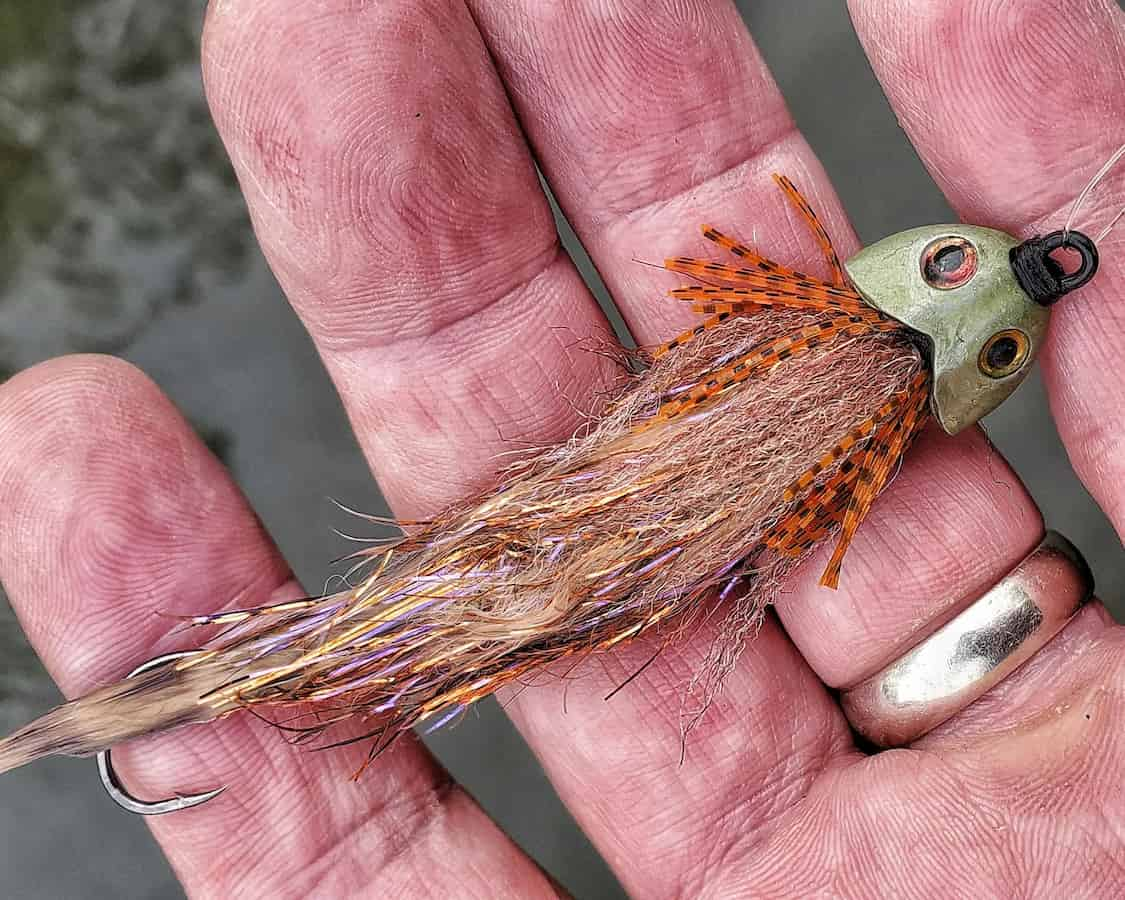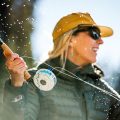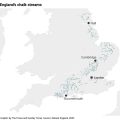Early Summer Streamer Strategies

Image by Mike Doughty
Early summer is a time of plenty. The air is warm, the rivers cold, and the trout are active. With insects hatching by the thousands, fly anglers are spoiled which by the array of patterns that will catch unpressured trout feeding with unbridled gluttony. Most capitalize on this early summer bonanza by drifting dry flies through limpid pools or by bouncing nymphs through riffles and tumbling runs. However, a few anglers set aside the nymphs and dries of the season because they know early summer offers one of the best chances of the year for landing truly giant trout on streamers.
Summer Streamer Strategies
Streamer fishing in the summer is a different sort of game. Large predatory trout are aggressive during this time of year and will push out of their deep water haunts to prey on the smaller fish feeding on insects along the shore. These big trout move in fast and hit hard, often striking as soon as your fly hits the water. This means that instead of throwing long casts and swimming your streamers to cover water as you typically do to find trout, you’re splashing down flies in short smashing casts and creating a lot of chaos to trigger aggressive fish. The most effective way to do this is by finding the type of structure where these big trout make their homes and then throwing your streamers right into their living room.
Big trout are ambush predators. During the early part of summer, they lie in wait for unsuspecting baitfish and smaller trout to swim right into their waiting jaws. Places like log jams, overhanging brush, undercut banks, and rock walls in less than 4 feet of water where these big fish can rest comfortably are ideal spots to concentrate your early summer streamer fishing. This is especially true in any areas immediately adjacent to prime trout feeding lanes. Look for structure in shadowy areas along the bank and along any sharp drops-offs close to areas where you know smaller fish are actively feeding. You’ll find the big trout that are hunting for them.
Forget about tight loops and subtle presentations. Instead, you’ll want to splash your streamers down hard, make a few hard strips, and then pick up and cast again. The splashing fly is incredibly important because it draws the attention of any trout in the area, and then a few quick strips or jerks of your rod gives the impression of prey trying to escape. This will trigger the fish to give chase and slam the retreating streamer so long as there’s one around.
It’s important to remember that big streamer-eating trout can be few and far between, so don’t spend all your time in one area. Once you’ve hit a few likely spots with no action, move on and continue to cover water. Though the fish are aggressive, they are still trout and can still be choosy about what they are eating. So if you have had no strikes or noticed any activity behind your fly after 20 or 30 casts, change your streamer patterns and color until you find a fly that the trout are reacting to. If you’re getting a lot of follows but no strikes, try changing to a smaller or larger streamer of the same or a similar color. This subtle change can often be just the thing to cause an angry but resistant trout to finally eat.
Early Summer Streamer Patterns and Equipment
While there are a lot of times when smaller streamers with slim profiles are going to be the most effective, early summer definitely isn’t one of them. You’re targeting large hostile trout in small strike zones, so use streamers that quickly make an impression on the fish. Large patterns with a lot of flash and a bulky profile that sink fast will work best. My favorite early summer patterns include Mike’s Meal Ticket, The Double Fuego, Sex Dungeon, and the Dolly Llama but any pattern with a bit of size and a weighted head should work well.
Casting these streamers on lighter 5-weight rods and floating lines can work but you’ll be much better off using heavier gear. A 6-weight or 7-weight rod with a bit more backbone will really help you punch large streamers down into the water quickly and accurately. In addition, as you’re going to be fishing close to a lot of structure, the heavier rods will also help you yank your streamer loose when you inevitably get snagged or when you have to pull a big trout out of the sticks.
Remember that you’re not stripping your streamers far from the bank, and most strikes will come right after the fly hits the water or the first couple strips. Trout reacting this way aren’t leader shy, and since you’’ll be pulling hooked fish away from structure and getting snagged often, you’ll want 12lb to 20lb leaders and tippet for plenty of leverage. Sink-tips can also be helpful but not entirely necessary as this is close quarter combat and a heavy streamer on a floating line will still give you the vertical presentation.
Get an Early Lead
We fly anglers look at summer as a chance to catch as many fish as we can. Yet, the best part about the season is that we have plenty of time. The days are long, and there are months of incredible fishing ahead of us. So in the early part of the season, when big trout are feeding all day and itching to chomp a streamer, why not ignore the easy numbers game and try a bit of trophy hunting?
The allure of rising trout pulls many an angler away from streamer fishing during the early summer. But if you can ignore those rising fish and stick to slapping the big guns beneath the surface, you have a chance to land that trout you’ve been dreaming about right out of the gate. You’ve got all summer to go fishing—the little ones can come later.











